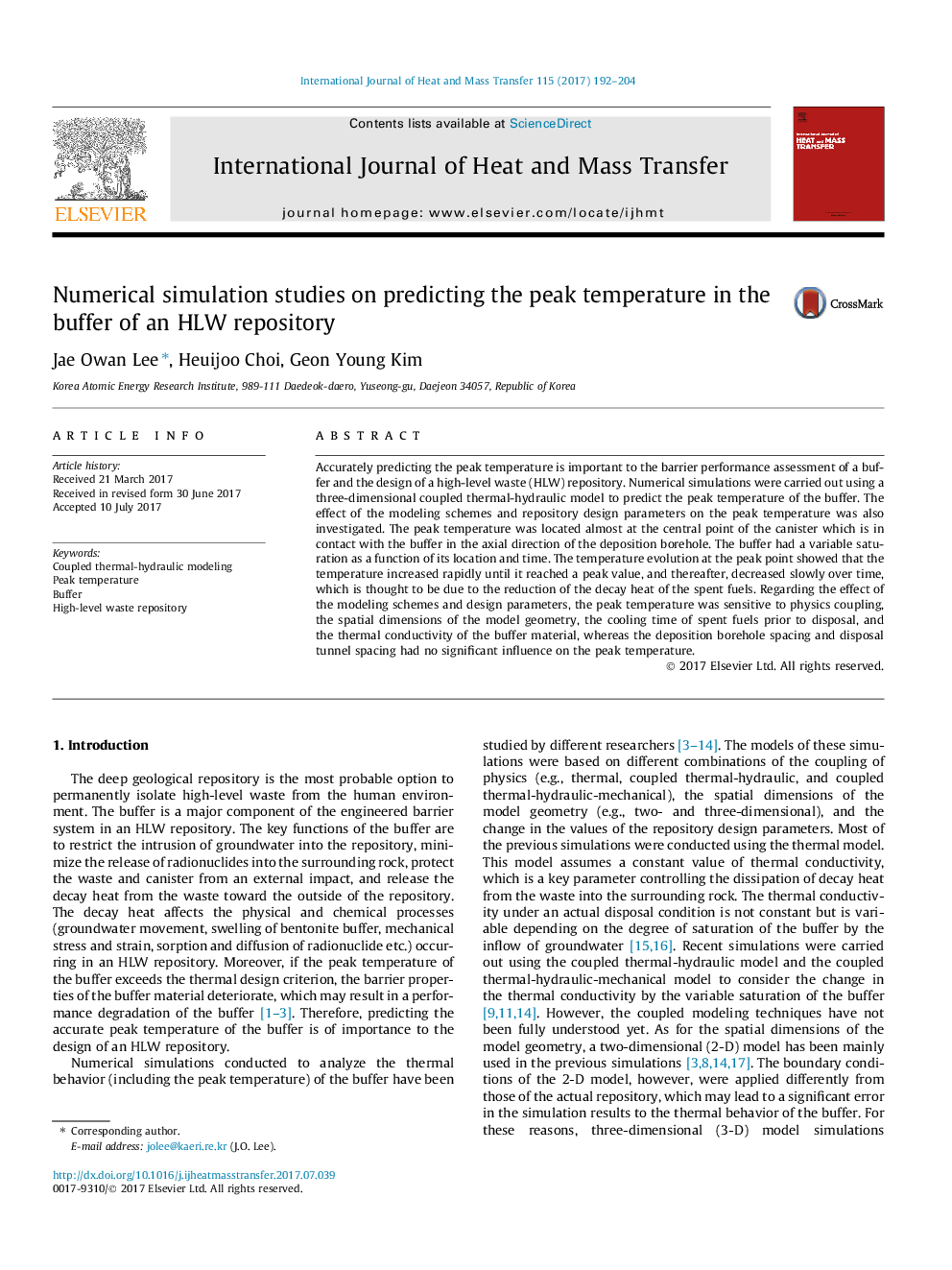| Article ID | Journal | Published Year | Pages | File Type |
|---|---|---|---|---|
| 4993459 | International Journal of Heat and Mass Transfer | 2017 | 13 Pages |
Abstract
Accurately predicting the peak temperature is important to the barrier performance assessment of a buffer and the design of a high-level waste (HLW) repository. Numerical simulations were carried out using a three-dimensional coupled thermal-hydraulic model to predict the peak temperature of the buffer. The effect of the modeling schemes and repository design parameters on the peak temperature was also investigated. The peak temperature was located almost at the central point of the canister which is in contact with the buffer in the axial direction of the deposition borehole. The buffer had a variable saturation as a function of its location and time. The temperature evolution at the peak point showed that the temperature increased rapidly until it reached a peak value, and thereafter, decreased slowly over time, which is thought to be due to the reduction of the decay heat of the spent fuels. Regarding the effect of the modeling schemes and design parameters, the peak temperature was sensitive to physics coupling, the spatial dimensions of the model geometry, the cooling time of spent fuels prior to disposal, and the thermal conductivity of the buffer material, whereas the deposition borehole spacing and disposal tunnel spacing had no significant influence on the peak temperature.
Related Topics
Physical Sciences and Engineering
Chemical Engineering
Fluid Flow and Transfer Processes
Authors
Jae Owan Lee, Heuijoo Choi, Geon Young Kim,
